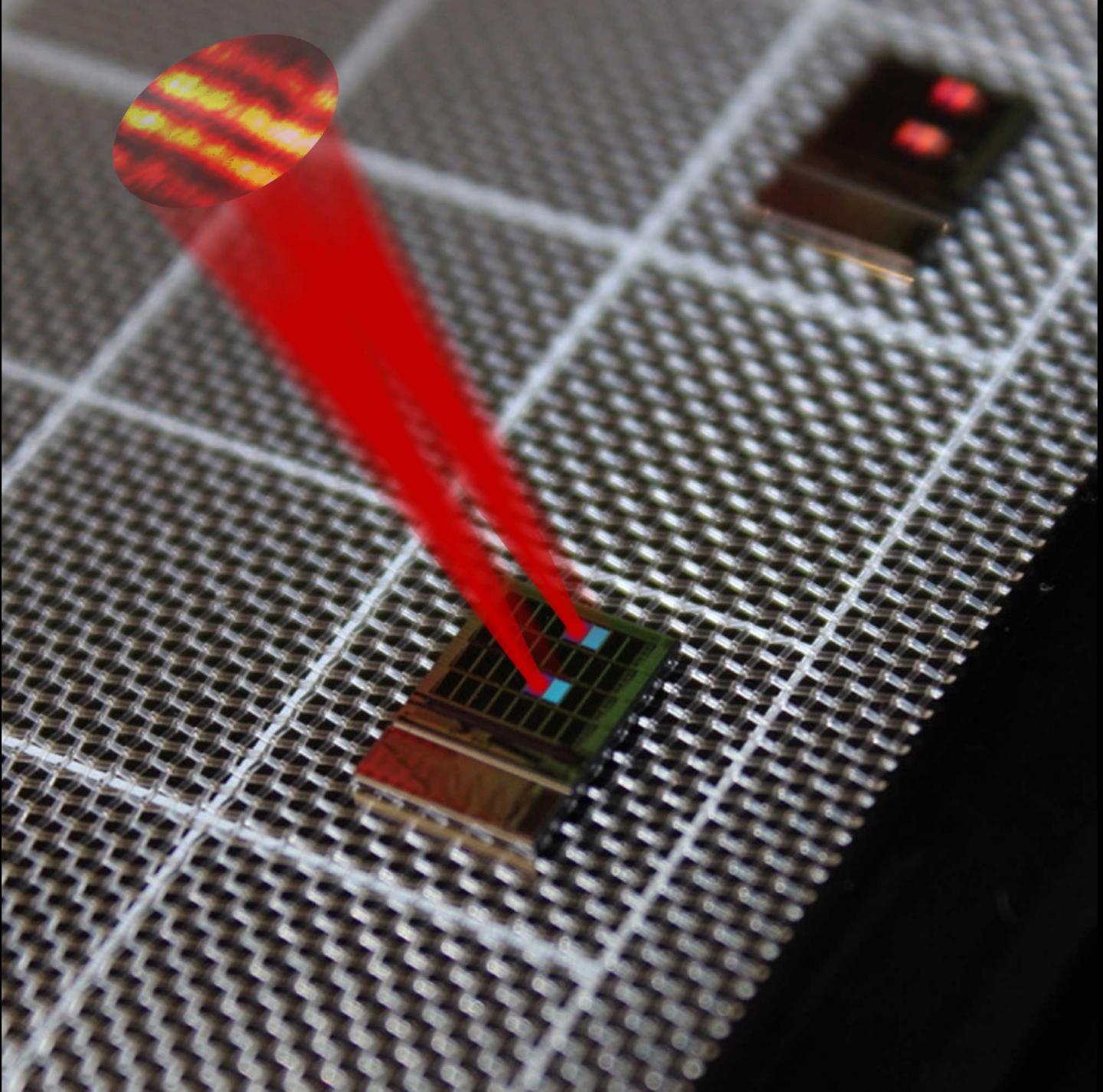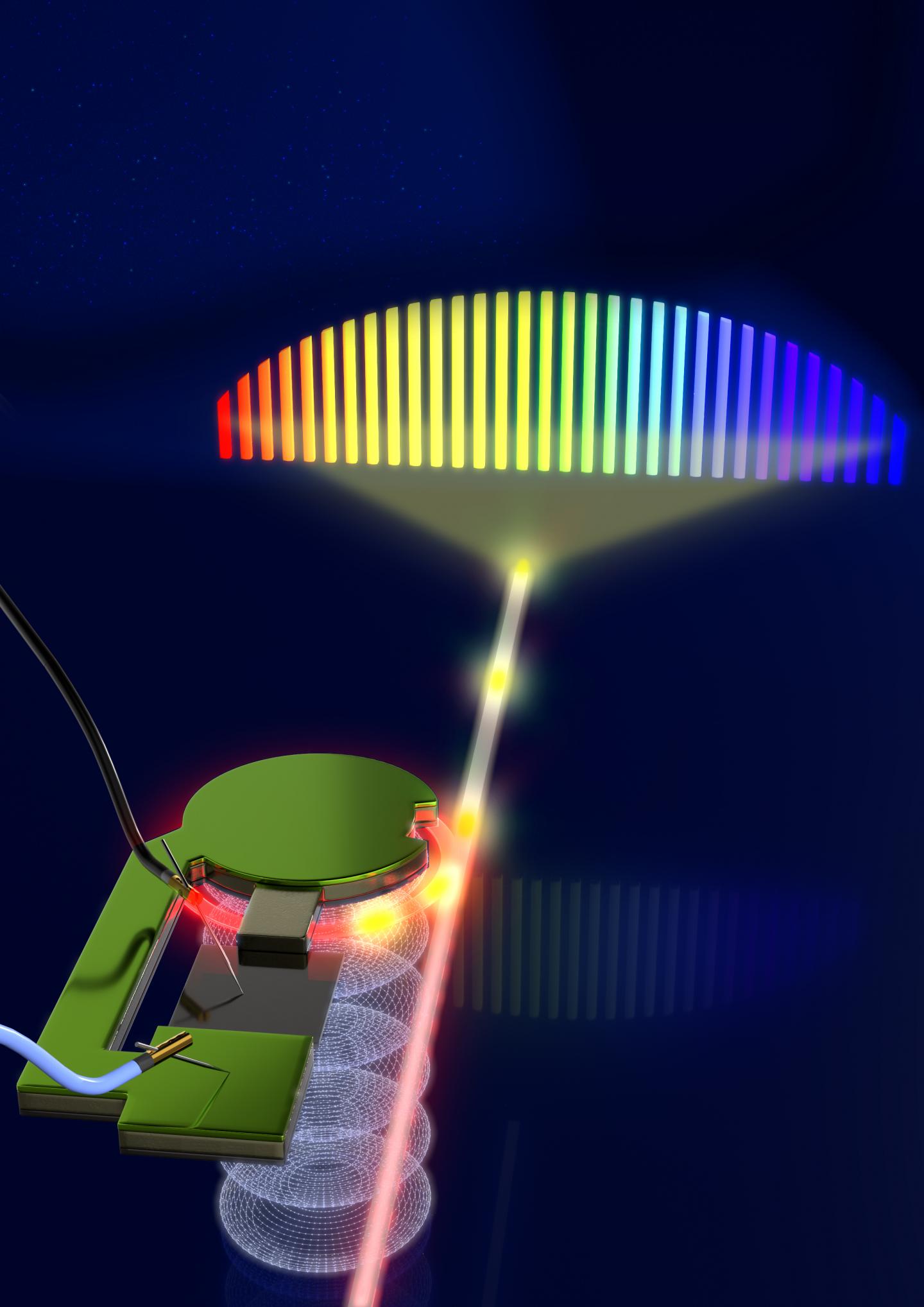Two recent researches of LiDAR introduced new solutions to improve the sensing technology. The study by University of Colorado Boulder described a new silicon ship without moving parts or electronics that enhances resolution and scanning speed for LiDAR sensor. In addition, researchers from Purdue University and École polytechnique fédérale de Lausanne (EPFL) unveiled their development with FMCW LiDAR.
For the research of Univerity of Colorado Boulder aims to develop small chip to replace existing big LiDAR system. The research team built a new way of steering laser beams called wavelength steering, where each wavelength, or "color," of the laser is pointed to a unique angle. With the technology, the chip not only provides a 2D scanning function but also 3D images with color. Since the beams are easily controlled by simply changing colors, multiple phased arrays can be controlled simultaneously to create a bigger aperture and a higher resolution image.

(Image: University of Colorado Boulder)
Results of the study was published in Optica. The researchers believe the approach can lead to cheaper and less complex LiDAR products for the market where demands for sensing and detecting applications continue to expand.
Another LiDAR research was published in Nature by the the OxideMEMS lab at Purdue University and the Laboratory of Photonics and Quantum Measurements at École polytechnique fédérale de Lausanne (EPFL), a research institute and university in Lausanne, Switzerland.
The research team built a method to enable FMCW LiDAR to achieve detection with higher resolution of fast-moving objects through mechanical control and modulation of light on a silicon chip. The technology integrates MEMS transducers made of aluminum nitride to modulate the microcomb at high frequencies ranging from megahertz to gigahertz.

(WoogieWorks graphic/Alex Mehler)
According to the researchers, the new technology could provide the impetus for microcomb applications in power-critical systems such as in space, data centers and portable atomic clocks, or in extreme environments such as those with cryogenic temperatures.





 CN
TW
EN
CN
TW
EN







